7 Real-World Applications of Power and Distribution Transformers?
Are you struggling to understand how power and distribution transformers fit into modern energy systems? You’re not alone. Many engineers and project managers find it challenging to visualize these crucial components in real-world scenarios. But what if you could see exactly how these transformers are applied across various industries?
Power and distribution transformers are used across industries to manage voltage, ensure reliable power delivery, and support diverse applications. This guide explores seven real-world use cases, from renewable energy plants to urban substations, helping engineers and project owners choose the right transformer for each scenario.
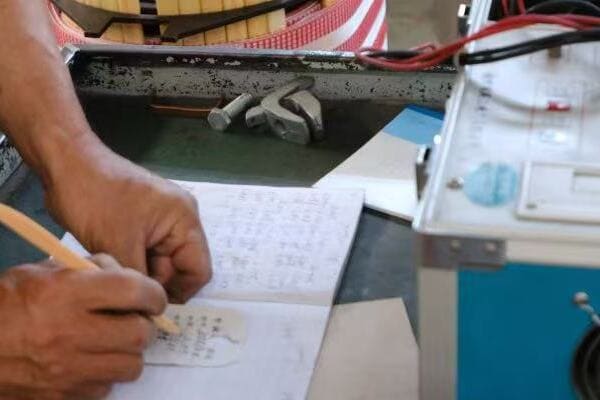
In this comprehensive guide, I’ll walk you through seven practical applications of power and distribution transformers. Whether you’re working on utility-scale projects, industrial facilities, or urban infrastructure, this article will provide you with concrete examples of how these transformers are used in the field.
Utility Substations: High-Capacity Grid Support?
Have you ever wondered how electricity from power plants is distributed across vast regions? Utility substations play a crucial role in this process, but what type of transformers do they use, and why?
Utility substations rely on high-capacity power transformers to step down high transmission voltages to distribution levels. These transformers, often rated at 100+ MVA and handling voltages up to 765kV, are the backbone of the grid. They enable efficient long-distance power transmission and provide the flexibility needed for grid management and stability.
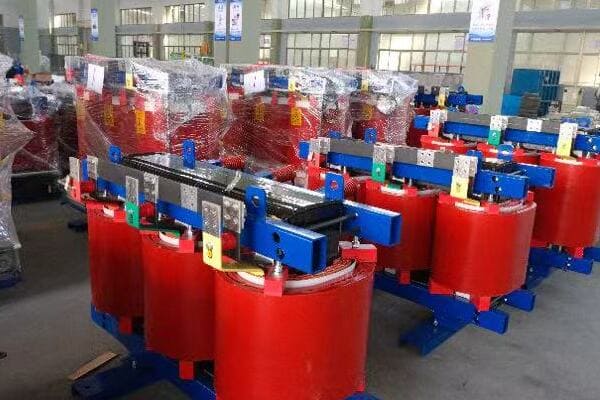
Deep Dive into Utility Substation Transformers
Let’s explore the key aspects of transformers used in utility substations:
- Transformer Types and Ratings
- Key Features for Grid Support
- Challenges and Solutions
- Real-World Examples
Transformer Types and Ratings
Utility substations typically use:
- Large power transformers
- Ratings: 100 MVA to 1000+ MVA
- Voltage levels: 132kV/33kV, 220kV/66kV, 400kV/132kV, etc.
I once worked on a project upgrading a major substation where we installed a 500 MVA, 400kV/132kV transformer. The sheer size of this unit was awe-inspiring – it weighed over 300 tons and required specialized transportation and installation equipment.
Key Features for Grid Support
These transformers are designed with several critical features:
- On-Load Tap Changers (OLTC) for voltage regulation
- Advanced cooling systems (ONAN/ONAF/OFAF)
- Robust short-circuit withstand capability
- Integrated monitoring and diagnostic systems
During a recent smart grid project, we implemented transformers with advanced monitoring capabilities. These units could communicate real-time data on load, temperature, and oil condition, allowing for predictive maintenance and improved grid stability.
Challenges and Solutions
Utility substation transformers face unique challenges:
- High reliability requirements
- Need for rapid response to load changes
- Environmental concerns (oil leaks, noise)
Solutions we’ve implemented include:
- Use of biodegradable ester fluids instead of mineral oil
- Implementation of noise reduction technologies
- Design of rapid deployment mobile substation units for emergency response
Real-World Examples
Here are some examples of utility substation transformer applications:
| Location | Transformer Specs | Special Features |
|---|---|---|
| Urban Grid Hub | 300 MVA, 220kV/66kV | Low noise design, OLTC |
| Renewable Integration Point | 200 MVA, 400kV/110kV | Enhanced harmonic handling |
| Industrial Zone Substation | 100 MVA, 132kV/33kV | Overload capacity, smart monitoring |
In a recent project for a major utility, we installed a 400 MVA, 400kV/220kV autotransformer at a key grid interconnection point. This unit played a crucial role in balancing load between different regions and improving overall grid flexibility.
The choice of transformer in utility substations is critical for several reasons:
- They are often the most expensive single components in the substation
- Their performance directly impacts grid stability and reliability
- They need to handle both steady-state and transient conditions effectively
When selecting transformers for utility substations, key considerations include:
- Future load growth projections
- Grid interconnection requirements
- Environmental factors (e.g., altitude, ambient temperature)
- Maintenance and monitoring capabilities
In my experience, successful implementation of utility substation transformers requires close collaboration between utilities, transformer manufacturers, and system integrators. It’s not just about selecting a high-capacity unit; it’s about ensuring that the transformer’s characteristics align perfectly with the specific needs of the grid at that location.
As we move towards smarter, more flexible grids, the role of these transformers becomes even more critical. They are no longer just passive components but active participants in grid management, enabling the responsive, efficient, and reliable power systems of the future.
Renewable Energy Plants: Solar and Wind Integration?
Are you grappling with the challenges of integrating variable renewable energy sources into the grid? The key to successful integration often lies in the choice of transformers. But what specific transformer solutions do solar and wind plants require?
Renewable energy plants use a combination of distribution and power transformers to manage the unique challenges of solar and wind power integration. Distribution transformers, often dry-type or oil-filled, handle the output from inverters in solar farms or individual wind turbines. Larger power transformers then step up the voltage for grid connection, dealing with the variable nature of renewable generation.

Transformer Solutions for Renewable Energy Integration
Let’s explore the key aspects of transformers used in renewable energy plants:
- Solar Farm Transformer Configurations
- Wind Farm Transformer Applications
- Unique Challenges in Renewable Energy
- Innovative Solutions and Technologies
Solar Farm Transformer Configurations
Solar farms typically use a two-stage transformer setup:
-
Inverter Transformers (Distribution Type):
- Ratings: 500 kVA to 2500 kVA
- Voltage: 400V/33kV or 600V/33kV
- Often dry-type for reduced maintenance
-
Main Step-Up Transformers (Power Type):
- Ratings: 10 MVA to 100+ MVA
- Voltage: 33kV/110kV or 33kV/220kV
- Usually oil-filled for better cooling
I recently worked on a 100 MW solar farm project where we implemented twenty 2500 kVA dry-type inverter transformers and two 50 MVA oil-filled main step-up transformers. This configuration allowed for efficient power collection and grid integration while providing the flexibility to handle the variable output of the solar panels.
Wind Farm Transformer Applications
Wind farms have unique transformer needs:
-
Nacelle Transformers (Distribution Type):
- Ratings: 2 MVA to 5 MVA
- Voltage: 690V/33kV
- Compact design for installation inside wind turbines
-
Collection Point Transformers (Distribution/Power Type):
- Ratings: 20 MVA to 50 MVA
- Voltage: 33kV/110kV
- Often pad-mounted or containerized for offshore applications
-
Main Substation Transformers (Power Type):
- Similar to solar farm main transformers
- May need to handle higher capacities for large offshore wind farms
During an offshore wind project, we faced the challenge of designing transformers that could withstand the harsh marine environment. We implemented specially sealed units with corrosion-resistant materials and advanced monitoring systems to ensure reliability in these extreme conditions.
Unique Challenges in Renewable Energy
Transformers in renewable energy plants face several specific challenges:
- Variable and intermittent power generation
- Harmonic distortion from inverters
- Exposure to harsh environments (desert heat, marine conditions)
- Need for compact designs in wind turbine applications
Here’s how these challenges are typically addressed:
| Challenge | Solution |
|---|---|
| Variable Generation | Use of tap changers and advanced voltage regulation |
| Harmonic Distortion | K-factor rated transformers, harmonic mitigation designs |
| Environmental Exposure | Enhanced insulation, special cooling systems |
| Space Constraints | Compact designs, integration with other components |
Innovative Solutions and Technologies
To meet the unique needs of renewable energy plants, several innovative transformer technologies have emerged:
-
Smart Transformers:
- Equipped with advanced monitoring and control capabilities
- Can adjust to varying load conditions in real-time
- Enable better integration with smart grid systems
-
Ester-Filled Transformers:
- Use biodegradable fluids instead of mineral oil
- Offer improved fire safety and environmental protection
- Particularly useful in offshore wind applications
-
Modular and Scalable Designs:
- Allow for easy capacity expansion as renewable plants grow
- Reduce installation time and costs
In a recent solar project, we implemented smart transformers that could communicate with the plant’s central control system. This allowed for dynamic adjustment of voltage regulation based on solar output and grid conditions, significantly improving overall plant efficiency and grid stability.
When selecting transformers for renewable energy applications, key considerations include:
- Ability to handle variable loads and reverse power flow
- Efficiency across a wide range of operating conditions
- Environmental impact and safety features
- Integration capabilities with plant control systems
- Scalability for future expansion
In my experience, successful integration of transformers in renewable energy plants requires a holistic approach. It’s not just about handling the power output; it’s about creating a flexible, efficient, and reliable link between the renewable source and the grid. As renewable energy continues to grow in importance, the role of these specialized transformers becomes increasingly critical in our transition to a more sustainable energy future.
Industrial Facilities: Heavy Equipment and Motor Loads?
Are you facing challenges in powering large industrial facilities with their demanding and often unpredictable power needs? The right transformer solution is crucial for ensuring reliable operation and energy efficiency. But how do you choose the best transformer configuration for these complex industrial environments?
Industrial facilities often require a combination of power and distribution transformers to handle heavy equipment and motor loads. Power transformers, typically rated 5-100 MVA, manage the main power supply, while multiple distribution transformers (500 kVA – 2500 kVA) handle specific areas or equipment. This setup ensures efficient power distribution and the ability to manage varying load profiles across the facility.
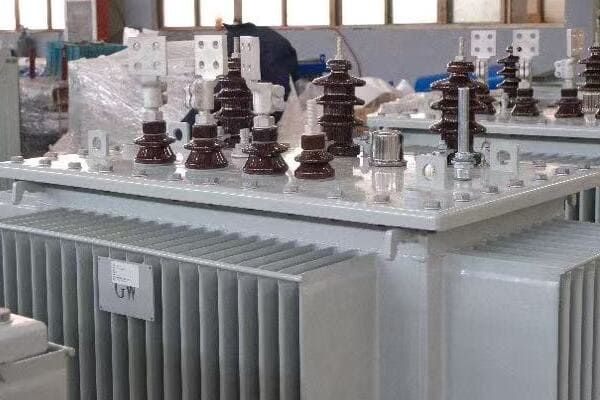
Transformer Solutions for Industrial Facilities
Let’s explore the key aspects of transformers used in industrial settings:
- Main Incoming Power Transformers
- Distribution Transformers for Specific Areas
- Special Considerations for Motor Loads
- Energy Efficiency and Power Quality
Main Incoming Power Transformers
These transformers serve as the primary power source for the entire facility:
- Typically step-down from utility voltage (e.g., 132kV) to plant distribution voltage (e.g., 33kV or 11kV)
- Ratings: Often in the range of 20 MVA to 100 MVA
- Features: On-Load Tap Changers (OLTC), advanced cooling systems
I once worked on a project for a large steel mill where we installed two 75 MVA, 132kV/33kV transformers. These units were crucial in providing the massive power required for electric arc furnaces while maintaining voltage stability under heavily fluctuating loads.
Distribution Transformers for Specific Areas
Multiple distribution transformers are used throughout the facility:
- Step down voltage from plant distribution level to utilization voltage (e.g., 400V)
- Ratings: Typically 500 kVA to 2500 kVA
- Types: Both dry-type and oil-filled, depending on location and environment
In a recent chemical plant project, we implemented a network of 2000 kVA dry-type transformers throughout the facility. These units were strategically placed to serve different production areas, providing the necessary power while meeting strict safety and environmental requirements.
Special Considerations for Motor Loads
Industrial facilities often have large motor loads, which require special transformer considerations:
- High inrush currents during motor starting
- Potential for harmonic distortion
- Need for voltage regulation under varying load conditions
Solutions we’ve implemented include:
- K-factor rated transformers for harmonic-rich environments
- Transformers with enhanced short-circuit strength
- Integration with soft starters or variable frequency drives (VFDs)
Here’s a comparison of transformer features for different industrial applications:
| Application | Transformer Type | Key Features |
|---|---|---|
| General Power Distribution | Oil-filled, 5-20 MVA | OLTC, Robust Design |
| Motor Control Centers | Dry-type, 1-2.5 MVA | K-factor rating, Close-coupled |
| Process-Specific Areas | Application-specific | Enhanced cooling, Special protection |
Energy Efficiency and Power Quality
In industrial settings, transformer efficiency and power quality are critical:
-
Energy Efficiency:
- Use of low-loss core materials (e.g., amorphous cores)
- Optimal sizing to match typical load profiles
- Implementation of energy management systems
-
Power Quality:
- Harmonic mitigation techniques
- Voltage regulation for sensitive equipment
- Power factor correction integration
During a recent modernization project for an automotive plant, we replaced old transformers with high-efficiency units featuring amorphous cores. This upgrade resulted in a 30% reduction in transformer losses, significantly impacting the plant’s overall energy consumption.
Key considerations when selecting transformers for industrial facilities include:
- Load characteristics (constant vs. variable, motor loads)
- Environmental factors (temperature, dust, corrosive atmospheres)
- Future expansion plans
- Maintenance and reliability requirements
- Energy efficiency goals
In my experience, successful implementation of transformer solutions in industrial facilities requires a deep understanding of both the electrical requirements and the manufacturing processes they support. It’s not just about providing power; it’s about ensuring that power delivery is optimized for the specific needs of each area of the facility.
As industries continue to evolve, with increasing automation and the adoption of Industry 4.0 technologies, the role of transformers becomes even more critical. They must not only provide reliable power but also integrate with smart systems for improved efficiency and predictive maintenance. By carefully considering these factors and leveraging advanced transformer technologies, industrial facilities can ensure reliable, efficient power distribution that supports their complex operational needs.
Commercial Buildings: Safe, Silent, Indoor Power?
Are you struggling with the challenge of providing reliable power in commercial buildings while ensuring safety, minimizing noise, and maximizing space efficiency? The right transformer solution is crucial, but what specific considerations should you keep in mind for these indoor, often densely populated environments?
Commercial buildings typically use dry-type distribution transformers for safe, silent indoor power distribution. These transformers, usually ranging from 100 kVA to 2500 kVA, step down voltage from medium levels (e.g., 11kV) to utilization voltages (e.g., 400V/230V). Key features include fire resistance, low noise operation, and compact design to fit in limited spaces like basements or dedicated electrical rooms.
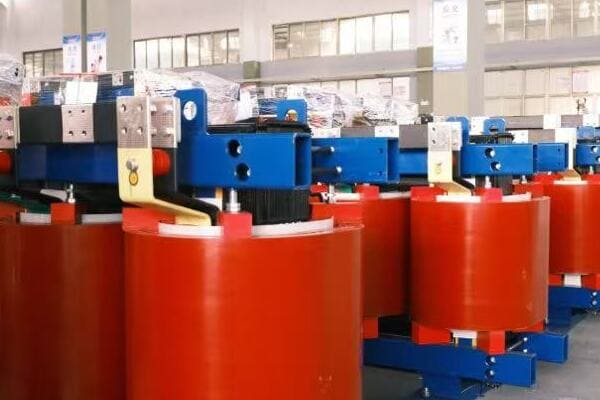
Transformer Solutions for Commercial Buildings
Let’s explore the key aspects of transformers used in commercial settings:
- Dry-Type Transformer Characteristics
- Safety and Fire Resistance
- Noise Reduction Techniques
- Space-Saving Designs and Installation
Dry-Type Transformer Characteristics
Commercial buildings predominantly use dry-type transformers due to their numerous advantages:
- Voltage ratings: Typically 11kV/400V or 33kV/400V
- Power ratings: Usually 100 kVA to 2500 kVA
- Insulation: Class H (180°C) or Class F (155°C)
- Cooling: AN (Air Natural) or AF (Air Forced)
I recently worked on a project for a large office complex where we installed multiple 1500 kVA, 11kV/400V dry-type transformers. These units provided efficient power distribution throughout the building while meeting strict safety and noise requirements.
Safety and Fire Resistance
Safety is paramount in commercial buildings, and dry-type transformers offer several advantages:
- No oil, eliminating the risk of oil leaks or fires
- Self-extinguishing properties
- Lower fire risk compared to oil-filled transformers
- Compliance with stringent building codes and insurance requirements
During a hospital renovation project, we implemented F1-class (fire resistant) dry-type transformers. These units not only met the hospital’s strict safety standards but also allowed for installation closer to the point of use, improving overall system efficiency.
Noise Reduction Techniques
Minimizing transformer noise is crucial in commercial environments:
- Use of high-quality core materials to reduce magnetostriction
- Advanced winding techniques to minimize vibrations
- Implementation of sound-absorbing enclosures
- Strategic placement away from noise-sensitive areas
Here’s a comparison of noise levels for different transformer types:
| Transformer Type | Typical Noise Level (dB) | Application |
|---|---|---|
| Standard Dry-Type | 60-65 | General commercial use |
| Low-Noise Dry-Type | 50-55 | Office spaces, hotels |
| Ultra-Low Noise | <45 | Libraries, hospitals |
In a recent project for a luxury hotel, we implemented ultra-low noise transformers with specially designed enclosures. This allowed us to place the units closer to guest areas without compromising the quiet ambiance, significantly reducing cable runs and improving overall efficiency.
Space-Saving Designs and Installation
Commercial buildings often face space constraints, requiring innovative transformer solutions:
- Compact designs with optimized footprints
- Vertical installations to save floor space
- Integration with switchgear for all-in-one solutions
- Use of modular designs for easier installation and future upgrades
During a retrofit project in a crowded urban office building, we utilized a vertical transformer design that reduced the required floor space by 40% compared to traditional layouts. This allowed the building to reclaim valuable real estate while upgrading its power infrastructure.
Key considerations for selecting transformers in commercial buildings include:
-
Load Profile Analysis:
- Understand the building’s power demand patterns
- Consider future expansion or changes in usage
-
Environmental Factors:
- Ambient temperature and ventilation in installation areas
- Potential exposure to dust or humidity
-
Maintenance and Accessibility:
- Ensure ease of access for routine inspections
- Plan for potential replacement or upgrades
-
Energy Efficiency:
- Look for transformers that meet or exceed efficiency standards
- Consider the total cost of ownership, including energy losses
-
Smart Building Integration:
- Compatibility with building management systems
- Potential for remote monitoring and diagnostics
Here’s a quick guide for transformer selection based on building type:
| Building Type | Recommended Transformer | Key Features |
|---|---|---|
| Office Complex | Low-noise dry-type | High efficiency, smart monitoring |
| Shopping Mall | Cast resin | Fire resistant, overload capacity |
| Hospital | Ultra-low noise, F1 class | Highest safety standards, EMI shielding |
| Hotel | Ultra-low noise | Compact design, aesthetic considerations |
In my experience, successful implementation of transformers in commercial buildings requires a holistic approach. It’s not just about providing power; it’s about integrating the transformer seamlessly into the building’s infrastructure and operations.
I recall a project for a green-certified office building where we not only selected high-efficiency transformers but also integrated them with the building’s energy management system. This allowed for real-time load monitoring and optimization, contributing significantly to the building’s energy-saving goals and LEED certification.
When planning transformer installations in commercial buildings, consider these best practices:
- Collaborate closely with architects and building managers early in the design phase
- Conduct thorough site surveys to identify optimal installation locations
- Use 3D modeling to visualize installations and identify potential conflicts
- Implement a comprehensive commissioning process to ensure optimal performance
- Provide training to facility staff on monitoring and basic maintenance procedures
By carefully considering these factors and leveraging modern transformer technologies, you can ensure that commercial buildings have safe, efficient, and reliable power distribution systems that meet the complex needs of today’s businesses while preparing for future demands.
Urban Infrastructure: Underground and Compact Installations?
Are you grappling with the challenge of integrating power distribution into densely populated urban areas? The constraints of space, aesthetics, and safety in cities demand innovative transformer solutions. But how do you effectively implement these critical components in such challenging environments?
Urban infrastructure often relies on compact, underground transformer installations to meet power needs while preserving space and aesthetics. These typically involve pad-mounted or vault-type distribution transformers, ranging from 500 kVA to 2500 kVA. Key features include submersible designs, advanced cooling systems, and smart monitoring capabilities for reliable operation in confined, underground spaces.
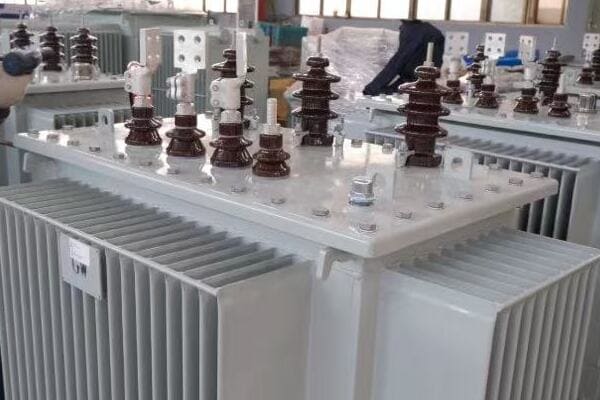
Transformer Solutions for Urban Infrastructure
Let’s explore the key aspects of transformers used in urban settings:
- Underground Transformer Types and Designs
- Compact Pad-Mounted Solutions
- Safety and Environmental Considerations
- Smart Grid Integration in Urban Areas
Underground Transformer Types and Designs
Urban areas often utilize specialized underground transformer designs:
- Submersible transformers for flood-prone areas
- Vault-type transformers for underground rooms or chambers
- Ratings typically range from 500 kVA to 2500 kVA
- Voltage levels usually 11kV/400V or 33kV/400V
I recently worked on a project in a major city center where we installed multiple 1000 kVA submersible transformers in underground vaults. These units were designed to operate reliably even in the event of flooding, ensuring continuous power supply to critical urban infrastructure.
Compact Pad-Mounted Solutions
Where underground installation isn’t feasible, compact pad-mounted transformers are used:
- Low-profile designs to blend with urban landscapes
- Often integrated with switchgear for an all-in-one solution
- Tamper-resistant and vandal-proof enclosures
- Typical ratings from 100 kVA to 2000 kVA
During a recent urban renewal project, we implemented a network of 1500 kVA pad-mounted transformers. These units were strategically placed in small green spaces, providing necessary power distribution while maintaining the aesthetic appeal of the newly developed area.
Safety and Environmental Considerations
Urban transformer installations require stringent safety and environmental measures:
- Fire-resistant designs, especially for underground installations
- Use of biodegradable fluids in place of mineral oil
- Advanced containment systems to prevent leaks
- Low noise operation to minimize disturbance in residential areas
Here’s a comparison of safety features for different urban transformer installations:
| Installation Type | Key Safety Features | Environmental Considerations |
|---|---|---|
| Underground Vault | Waterproof, fire-resistant | Leak detection, forced ventilation |
| Pad-Mounted | Tamper-proof, low-profile | Biodegradable fluids, noise reduction |
| Building Integrated | F1 class insulation, EMI shielding | Compact design, energy efficiency |
In a project for a historic city center, we utilized specially designed low-profile pad-mounted transformers with advanced noise reduction technology. This allowed us to place necessary power infrastructure without disrupting the area’s historic charm or disturbing residents.
Smart Grid Integration in Urban Areas
Modern urban transformer installations are increasingly integrated with smart grid technologies:
- Real-time monitoring and diagnostics
- Load balancing and demand response capabilities
- Integration with renewable energy sources and energy storage systems
- Advanced protection against cyber threats
During a recent smart city initiative, we implemented a network of intelligent transformers that could communicate with the central grid management system. This allowed for dynamic load management, rapid fault detection, and improved overall grid reliability in the face of growing urban power demands.
Key considerations for urban transformer installations include:
-
Space Optimization:
- Utilize compact designs and multi-function units
- Consider vertical installations where horizontal space is limited
-
Aesthetic Integration:
- Use of camouflaged or decorative enclosures
- Coordination with urban planners and architects for seamless integration
-
Reliability and Redundancy:
- Implement N+1 redundancy in critical areas
- Use of self-healing network designs
-
Future-Proofing:
- Plan for increasing power demands and electric vehicle charging needs
- Ensure compatibility with emerging smart city technologies
-
Maintenance Accessibility:
- Design for ease of maintenance in confined urban spaces
- Implement remote monitoring to reduce on-site inspection needs
In my experience, successful urban transformer installations require close collaboration between electrical engineers, urban planners, and local authorities. I recall a challenging project in a densely populated city where we had to retrofit modern transformer technology into a century-old underground infrastructure. By using 3D scanning and advanced modeling techniques, we were able to design a custom solution that fit within the existing space constraints while significantly upgrading the area’s power distribution capabilities.
When planning urban transformer installations, consider these best practices:
- Conduct thorough site surveys, including underground utility mapping
- Engage with local communities to address concerns and gather input
- Implement robust security measures to protect against vandalism and unauthorized access
- Use modular designs to allow for easier future upgrades or replacements
- Integrate transformers with urban renewable energy initiatives, such as solar-powered street lighting or EV charging stations
By carefully considering these factors and leveraging advanced transformer technologies, urban planners and electrical engineers can create power distribution systems that meet the complex needs of modern cities while preparing for future growth and technological advancements.
Remote and Rural Power Delivery?
Are you facing the challenge of providing reliable power to remote or rural areas where traditional grid infrastructure is limited or non-existent? The unique demands of these environments require specialized transformer solutions. But how do you ensure efficient and cost-effective power delivery in these often harsh and isolated conditions?
Remote and rural power delivery often relies on specialized distribution transformers designed for rugged environments and long-distance power transmission. These typically include pole-mounted transformers (25 kVA to 167 kVA) and small pad-mounted units (up to 500 kVA). Key features include enhanced surge protection, wide-range voltage regulation, and designs that minimize maintenance needs in hard-to-reach locations.

Transformer Solutions for Remote and Rural Areas
Let’s explore the key aspects of transformers used in remote and rural power delivery:
- Pole-Mounted Transformer Designs
- Off-Grid and Microgrid Solutions
- Durability and Environmental Resilience
- Cost-Effective Power Distribution Strategies
Pole-Mounted Transformer Designs
Pole-mounted transformers are a common solution for rural power distribution:
- Typical ratings range from 25 kVA to 167 kVA
- Single-phase and three-phase options available
- Often equipped with surge arresters and fused cutouts
- Designed for easy installation and minimal ground footprint
I recently worked on a rural electrification project where we deployed a network of 50 kVA pole-mounted transformers across a large agricultural area. These units were crucial in bringing reliable power to farms and small communities while minimizing infrastructure costs.
Off-Grid and Microgrid Solutions
For areas beyond the reach of the main grid, specialized transformer solutions are used:
- Integration with renewable energy sources (solar, wind, micro-hydro)
- Battery storage system integration
- Inverter-duty transformers for DC to AC conversion
- Bi-directional power flow capabilities for grid-tied microgrids
During a project in a remote island community, we implemented a microgrid system using 100 kVA pad-mounted transformers designed to work with a combination of solar panels and diesel generators. This hybrid system provided reliable power while significantly reducing fuel costs and environmental impact.
Durability and Environmental Resilience
Transformers in remote areas must withstand challenging conditions:
- Enhanced insulation for high-humidity environments
- Corrosion-resistant materials for coastal areas
- Extreme temperature ratings (-40°C to +50°C)
- Wildlife protection features to prevent animal-caused outages
Here’s a comparison of transformer features for different rural environments:
| Environment | Key Features | Example Application |
|---|---|---|
| Desert | Heat-resistant design, sand-proof enclosures | Solar farm integration |
| Tropical | Moisture-resistant, enhanced cooling | Island communities |
| Arctic | Extreme cold resistance, anti-icing measures | Remote research stations |
| Mountain | Lightning protection, landslide-resistant mounting | High-altitude villages |
In a project for a remote mining operation in a harsh desert environment, we utilized specially designed transformers with advanced cooling systems and sand-resistant enclosures. These units maintained reliable operation despite extreme heat and dust, ensuring continuous power for critical mining equipment.
Cost-Effective Power Distribution Strategies
Efficient power delivery in rural areas requires innovative approaches:
- Use of single-wire earth return (SWER) systems for long-distance, low-cost transmission
- Implementation of auto-reclosers and sectionalizers for improved reliability
- Voltage optimization techniques to reduce line losses
- Integration of local energy resources to reduce transmission requirements
During a rural electrification project in a developing country, we implemented a SWER system with strategically placed 25 kVA transformers. This approach allowed us to electrify a large area at a fraction of the cost of traditional three-phase systems, bringing power to communities for the first time.
Key considerations for remote and rural transformer installations include:
-
Load Growth Planning:
- Design for future expansion and increasing power demands
- Use of modular systems that can be easily upgraded
-
Maintenance and Accessibility:
- Implement remote monitoring systems to reduce site visits
- Design for easy replacement of components in challenging terrains
-
Environmental Impact:
- Use of eco-friendly insulating fluids
- Integration with local renewable energy sources
-
Community Involvement:
- Train local technicians for basic maintenance and troubleshooting
- Engage communities in protecting and maintaining power infrastructure
-
Reliability Enhancement:
- Implement redundancy where feasible
- Use of self-healing network designs in more developed rural areas
In my experience, successful rural electrification projects require a deep understanding of local conditions and community needs. I recall a project in a remote mountain village where we had to design a custom transformer solution that could be transported by helicopter and assembled on-site. By working closely with the local community and leveraging their knowledge of the terrain, we were able to create a power distribution system that was both technically sound and culturally appropriate.
When planning transformer installations for remote and rural areas, consider these best practices:
- Conduct thorough site surveys, including climate data and geotechnical assessments
- Utilize GIS mapping to optimize transformer placement and line routing
- Implement robust lightning protection systems in areas prone to electrical storms
- Consider the use of amorphous core transformers for improved efficiency in low-load scenarios
- Develop comprehensive training programs for local maintenance personnel
By carefully considering these factors and leveraging appropriate transformer technologies, engineers and project managers can bring reliable and sustainable power to remote and rural areas, improving quality of life and enabling economic development in these often underserved regions.
Mission-Critical Systems: Data Centers and Healthcare?
Are you grappling with the challenge of providing ultra-reliable power for mission-critical systems like data centers and healthcare facilities? The consequences of power failure in these environments can be catastrophic, but how do you ensure a level of reliability that goes beyond standard commercial applications?
Mission-critical systems in data centers and healthcare facilities require highly specialized transformer solutions. These typically involve redundant configurations of dry-type transformers (500 kVA to 2500 kVA) with advanced monitoring and rapid switchover capabilities. Key features include K-factor ratings for non-linear loads, low impedance for voltage stability, and integration with uninterruptible power supply (UPS) systems for seamless power delivery.
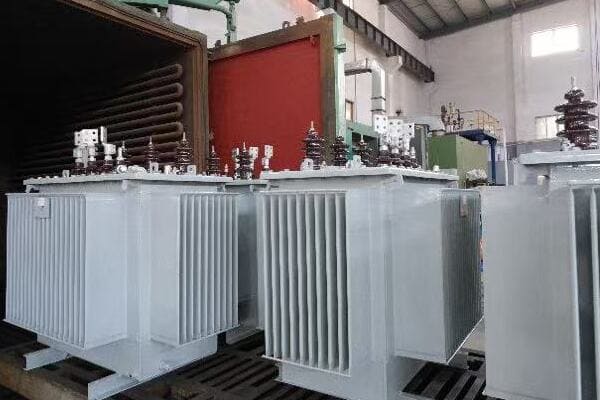
Transformer Solutions for Mission-Critical Systems
Let’s explore the key aspects of transformers used in data centers and healthcare facilities:
- High-Reliability Transformer Designs
- Redundancy and Fault Tolerance
- Power Quality and Harmonic Mitigation
- Integration with Backup and UPS Systems
High-Reliability Transformer Designs
Mission-critical systems demand transformers with exceptional reliability:
- Dry-type designs for enhanced safety and reduced maintenance
- Ratings typically range from 500 kVA to 2500 kVA
- Low-loss designs to minimize heat generation and improve efficiency
- Advanced monitoring systems for real-time health assessment
I recently worked on a project for a Tier IV data center where we implemented multiple 2000 kVA cast resin transformers. These units were designed with redundant cooling systems and continuous temperature monitoring, ensuring uninterrupted operation even under extreme conditions.
Redundancy and Fault Tolerance
Redundancy is key in mission-critical environments:
- N+1 or 2N configurations are common
- Rapid transfer switches for seamless switchover between units
- Compartmentalized designs to isolate potential faults
- Hot-swappable components for maintenance without downtime
During a healthcare facility upgrade, we implemented a 2N transformer configuration with automatic transfer switches. This setup allowed for continuous power supply even during maintenance operations, crucial for life-support systems and critical medical equipment.
Power Quality and Harmonic Mitigation
Data centers and medical equipment often generate significant harmonics:
- K-factor rated transformers (K-13 to K-20 common)
- Active harmonic filters integrated with transformer systems
- Low impedance designs for improved voltage regulation
- Electrostatic shielding to reduce electromagnetic interference
Here’s a comparison of transformer features for different mission-critical applications:
| Application | Key Features | Typical Rating |
|---|---|---|
| Data Center | K-20 rated, low impedance | 1500-2500 kVA |
| Hospital | K-13 rated, EMI shielding | 1000-2000 kVA |
| Financial Services | Ultra-low impedance, harmonic mitigation | 750-1500 kVA |
| Air Traffic Control | Dual redundant, high overload capacity | 500-1000 kVA |
In a recent project for a major financial institution’s data center, we implemented K-20 rated transformers with integrated harmonic filters. This solution effectively managed the high levels of harmonics generated by the server loads, ensuring clean power and reducing the risk of equipment malfunction due to power quality issues.
Integration with Backup and UPS Systems
Seamless integration with backup power systems is crucial:
- Compatibility with diesel generators and UPS systems
- Fast response to load changes during power source transitions
- Coordination with static transfer switches for uninterrupted power flow
- Integration with facility-wide power management systems
During a hospital modernization project, we designed a power system where the transformers were closely integrated with the UPS and emergency generator systems. This setup ensured that critical areas like operating rooms and intensive care units had absolutely no interruption in power supply, even during utility power failures.
Key considerations for transformer installations in mission-critical systems include:
-
Load Characterization:
- Detailed analysis of load profiles and harmonic content
- Consideration of future expansion and technology upgrades
-
Thermal Management:
- Advanced cooling systems to handle continuous high loads
- Real-time temperature monitoring and predictive maintenance
-
EMI/RFI Mitigation:
- Shielding techniques to prevent interference with sensitive equipment
- Proper grounding and bonding practices
-
Scalability and Flexibility:
- Modular designs to allow for easy capacity expansion
- Adaptability to changing technology and power requirements
-
Compliance and Certification:
- Adherence to industry-specific standards (e.g., HIPAA for healthcare, Uptime Institute for data centers)
- Regular testing and certification to maintain compliance
Here’s a quick guide for transformer selection based on specific mission-critical applications:
| Application | Recommended Transformer Type | Key Considerations |
|---|---|---|
| Large Data Center | Cast Resin, K-20 rated | High efficiency, low impedance, redundant cooling |
| Hospital | Dry-type, K-13 rated | EMI shielding, integration with emergency power |
| Financial Trading | Ultra-low impedance, K-factor | Rapid response to load changes, harmonic mitigation |
| Telecom Facility | Compact dry-type | High density, energy efficiency, scalability |
In my experience, successful implementation of transformers in mission-critical environments requires meticulous planning and a deep understanding of the specific operational requirements. I recall a project for a cutting-edge research facility where we had to design a power distribution system that could handle both extremely sensitive scientific equipment and high-power computing clusters. By using a combination of ultra-low impedance transformers for the computing loads and specially shielded units for the sensitive equipment areas, we were able to create a power system that met the diverse and demanding needs of the facility.
When planning transformer installations for mission-critical systems, consider these best practices:
- Conduct comprehensive power quality studies before finalizing transformer specifications
- Implement advanced monitoring systems with predictive maintenance capabilities
- Design for concurrent maintainability to allow for servicing without system downtime
- Use computational fluid dynamics (CFD) modeling to optimize transformer placement and cooling
- Develop detailed emergency response and recovery plans for potential transformer failures
By carefully considering these factors and leveraging state-of-the-art transformer technologies, engineers and facility managers can create power distribution systems for mission-critical environments that offer the highest levels of reliability, efficiency, and performance. In these settings, where every millisecond of uptime is crucial, the right transformer solution can make the difference between continuous operation and costly, potentially dangerous outages.
Remember, in mission-critical systems, transformers are not just power distribution components; they are vital links in the chain that keeps essential services running smoothly. By investing in the right transformer solutions and implementing best practices in their deployment and maintenance, organizations can ensure the continuity and reliability of their critical operations, whether it’s keeping a data center online or supporting life-saving medical equipment in a hospital.
Conclusion
Transformers play crucial roles across various applications, from utility-scale power distribution to mission-critical systems. Understanding the specific requirements of each application is key to selecting and implementing the right transformer solution. By considering factors like load profiles, environmental conditions, and reliability needs, engineers can ensure optimal performance and efficiency in diverse power distribution scenarios.
Recent Post
Quick Message
Request A free quote
We'd like to work with you
- +86 15558785111
- chbebgroup@chbebpower.com
- +86 15558785111
What We Do
CHINA BEI ER BIAN (CHBEB) GROUP, with 218 million in registered capital, originated from Beijing Beierbian Transformer Group. Headquartered in Beijing for R&D, it operates major production bases in Nanjing and Yueqing, producing high-quality products.
Latest Post
Latest Product
Contact Us
- +86 15558785111
- chbebgroup@chbebpower.com
- +86 15558785111
BeiJing
No 3,RongJing East Road,BeiJing Economic Technological Development Area,BeiJing,China
JiangSu
No 7️Xiangfeng Road,Jiangning,NanJing,JiangSu,China
WenZhou
No.211, Wei 16 Road, Industrial Zone, Yueqing, Wenzhou, Zhejiang, China.
XiangYang Industrial Zone ,YueQing,WenZhou,ZheJiang,China

